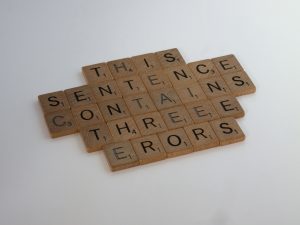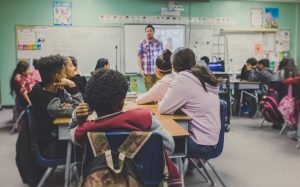By: Dr. Kavin Ming, Winthrop University
For the month of August, our blogs addressed a variety of topics related to the idea of using culturally responsive teaching with English Language Learners. Specifically, we identified strategies to strengthen culture-sensitive instruction; highlighted the importance of allowing students to use their first language, and determined key questions to ask ourselves as we implement culturally sustaining pedagogy. The root of these positive practices starts with cultural competence.
What is Cultural Competence and Why Does It Matter?
Cultural competence is the ability to successfully teach students from cultures other than one’s own. This requires a deep understanding of complex awareness and sensitivity, a wide body of knowledge, and a set of skills that, when taken together, produces effective cross-cultural teaching. One key element is acquiring this capacity is having a keen awareness of one’s own culture and the culture of others. I once read where an author said that you cannot truly teach students if you don’t really know them.

An awareness of one’s own culture and the culture of students impacts the types of books read, the kinds of materials selected, the variety of strategies used, and the evaluation practices implemented. Culturally competent educators use their cultural competence as a guide for action when working with students, parents, and members of the community.
Culture Matters
Student achievement continues to be at the forefront of all educational entities, including district, state, and federal organizations. The poor performance exhibited by large groups of diverse students in many areas around the country leaves many asking what can be done to move these students to higher levels of achievement. As the demographics of schools have changed, teaching and learning has not followed the same evolutionary pace. For a number of educators, traditional methods of instruction have predominated, and these methods do not reflect a genuine consideration for effective instructional methods and the impact of culture on teaching and learning. Thus, one of the most significant implications of professionally developing cultural competence is the basic understanding that culture does impact learning, and by adapting a different stance, based on an understanding of the significance of culture, students from diverse backgrounds can make academic gains.
Knowing Your Students Begins with Introspection

Teachers who look within analyze their own feelings towards those who are culturally different, determine how those feelings relate to the dominant culture, and think about what frame of reference influences these feelings. Key factors in understanding diverse students include learning about each person, and taking a personal interest in establishing positive relationships. It also includes continuously questioning one’s self in order to clarify salient issues. Teachers can engage in introspection as part of the planning or preparation period on a daily, weekly, or monthly basis. This frequency ensures that it is an ever-present part of their teaching routines.
Coupled with learning about one’s students, and questioning one’s self, teachers can develop cultural competence through personal development. Reading and seeking to understand the profiles and experiences of different cultures introduces teachers to contexts that help them identify similarities and differences within and across groups. A starting point is for teachers to purchase or borrow books that are written by people of color, including history, literature, and education. Some of these books include:
- Women of Silk by Gail Tsukiyama
- The Circuit: Stories from the Life of a Migrant Child by Francisco Jimenez
- I, Too, Am America by Langston Hughes
- Song of Solomon by Toni Morrison
- Cry, the Beloved Country by Alan Paton
It’s Personal

In order to teach students, teachers must first reach them. Teaching starts with the heart. The best laid lesson plans will not amount to much if teachers don’t really know who are the students sitting in front of them. When students know that teachers care about them, and are interested in them as individuals, they will open themselves up to hearing what the teacher has to say. Culture matters, and effective teachers recognize this importance and strive towards achieving cultural competence.
References
Aceves, T. C., & Orosco, M. J. (2014). Culturally responsive teaching (Document No. IC-2). Retrieved from University of Florida, Collaboration for Effective Educator, Development, Accountability, and Reform, Center website: http://ceedar.education.ufl.edu/tools/innovation-configurations/.
Au, K. (2009). Isn’t culturally responsive instruction just good teaching? Social Education, 73(4), 279-183.
Diller, J. V., & Moule, J. (2005). Cultural competence: A primer for educators. Toronto, CA: Thomson Wadsworth.
Howard, T.C. (2003). Culturally relevant pedagogy: Ingredients for critical teacher reflection. Theory into Practice, 42(3), 195-202.
Pang, V. O. (2001). Why do we need this class? Phi Delta Kappan, 76(4), 289-292.
About the Author

Dr. Kavin Ming is a Professor at Winthrop University in Rock Hill, SC. She is currently serving as the Department Chair in the Department of Curriculum and Pedagogy. She teaches undergraduate literacy methods courses and graduate content area literacy and practicum courses. Kavin’s research interests include at-risk student populations, culturally responsive pedagogy, content area literacy instruction, and multisensory teaching of literacy skills. Kavin can be contacted at mingk@winthrop.edu.
















